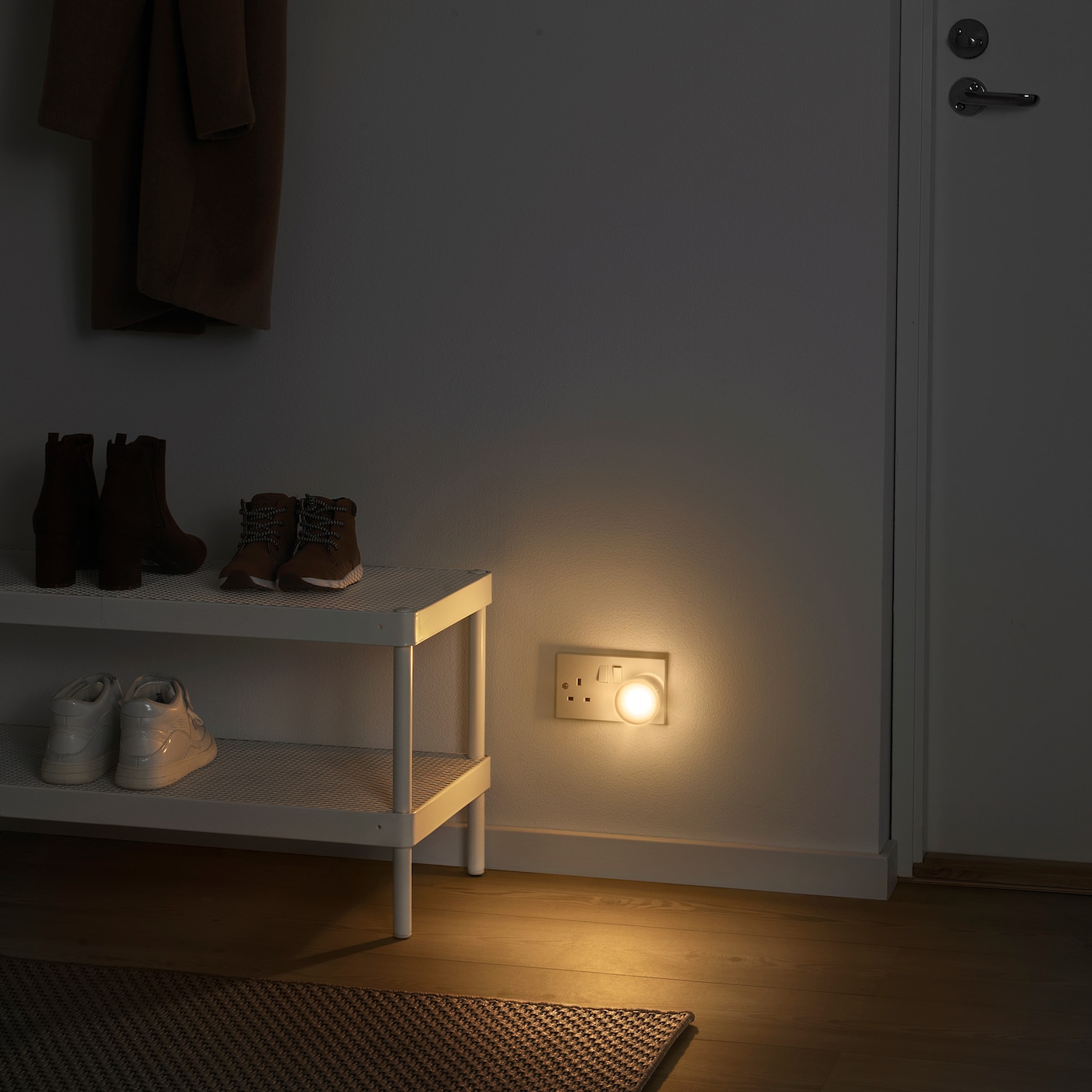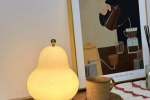A bedroom night light is a small, low-intensity light that is placed in the bedroom to provide a soft glow during the night. It is typically used to provide a sense of security and comfort, as well as to prevent accidents and injuries that may occur in the dark. Having a night light in the bedroom has become increasingly popular, as it offers numerous benefits for sleep quality and overall well-being.
Benefits of Using a Night Light
One of the main benefits of using a bedroom night light is that it provides a sense of security and comfort. Many people feel anxious or fearful in the dark, and having a soft glow from a night light can help alleviate these feelings. It creates a soothing atmosphere that promotes relaxation and better sleep.
In addition, a night light can help prevent accidents and injuries that may occur when navigating through a dark room. It provides enough illumination to see obstacles or hazards, such as furniture or toys on the floor, reducing the risk of tripping or falling.
Furthermore, a night light can also reduce anxiety and fear, especially for children who may be afraid of the dark. The gentle glow from the night light can provide reassurance and make them feel safe and secure in their bedroom.
How Bedroom Night Lights Help Improve Sleep Quality
A bedroom night light can have a significant impact on sleep quality. Here are some ways in which it helps improve sleep:
1. Regulates circadian rhythm: The circadian rhythm is the body’s internal clock that regulates sleep-wake cycles. Exposure to bright lights, especially blue light emitted by electronic devices, can disrupt this rhythm and make it difficult to fall asleep. A night light with warm-colored light helps regulate the circadian rhythm by mimicking the natural sunset and signaling the body to prepare for sleep.
2. Reduces exposure to blue light: Blue light, which is emitted by electronic devices such as smartphones and tablets, can suppress the production of melatonin, a hormone that regulates sleep. Using a night light instead of electronic devices before bed reduces exposure to blue light and promotes better sleep.
3. Creates a calming atmosphere: The soft glow from a night light creates a calming atmosphere in the bedroom, which is conducive to relaxation and sleep. It helps create a separation between the daytime environment and the sleep environment, signaling to the brain that it is time to wind down and prepare for sleep.
4. Helps prevent sleep disturbances: A night light can help prevent sleep disturbances, such as night awakenings or nightmares. The gentle illumination provides a sense of security and reduces the likelihood of waking up disoriented or scared in the middle of the night.
Types of Bedroom Night Lights Available in the Market
There are several types of bedroom night lights decozux available in the market, each with its own unique features and benefits. Here are some common types:
1. Plug-in night lights: These night lights are plugged into an electrical outlet and provide a continuous source of light throughout the night. They are convenient and easy to use, as they do not require batteries or frequent replacements.
2. Battery-operated night lights: These night lights are powered by batteries and can be placed anywhere in the room without the need for an electrical outlet. They are portable and can be easily moved around as needed.
3. Motion-activated night lights: These night lights are equipped with motion sensors that detect movement in the room. They automatically turn on when someone enters the room and turn off after a certain period of inactivity. They are energy-efficient and ideal for those who prefer not to have a constant source of light throughout the night.
4. Smart night lights: These night lights can be controlled remotely using a smartphone or voice commands. They often come with additional features such as adjustable brightness levels, color options, and scheduling capabilities. Smart night lights offer convenience and customization options for a personalized sleep environment.
Factors to Consider When Choosing a Bedroom Night Light
When choosing a bedroom night light, there are several factors to consider to ensure that it meets your specific needs and preferences. Here are some important factors to keep in mind:
1. Brightness level: The brightness level of the night light should be sufficient to provide a soft glow without being too bright or too dim. It should be enough to navigate the room safely without disturbing sleep.
2. Color temperature: The color temperature of the night light can have an impact on sleep quality. Warm-colored lights, such as those with a color temperature of 2700K to 3000K, are recommended as they promote relaxation and melatonin production.
3. Size and design: The size and design of the night light should complement the bedroom decor and fit seamlessly into the space. It should be compact and unobtrusive, while still providing adequate illumination.
4. Power source: Consider whether you prefer a plug-in night light or a battery-operated one. Plug-in night lights are more convenient as they do not require batteries, but battery-operated ones offer more flexibility in terms of placement.
5. Energy efficiency: Look for energy-efficient night lights that consume minimal power and have a long lifespan. LED night lights are a popular choice as they are energy-efficient and have a long-lasting bulb.
How to Install a Bedroom Night Light

Installing a bedroom night light is a simple process that can be done in a few easy steps. Here is a guide on how to install different types of night lights:
1. Choosing the right location: Determine the best location for the night light based on your needs and preferences. Consider factors such as proximity to the bed, accessibility to electrical outlets, and visibility in the room.
2. Installing a plug-in night light: Plug the night light into an electrical outlet near the desired location. Ensure that the night light is securely plugged in and that the cord is not a tripping hazard.
3. Installing a battery-operated night light: Insert the batteries into the night light according to the manufacturer’s instructions. Place the night light in the desired location, making sure it is stable and secure.
4. Installing a motion-activated night light: Follow the manufacturer’s instructions for installing a motion-activated night light. Typically, this involves mounting the night light on a wall or placing it on a flat surface. Adjust the settings to customize the sensitivity and duration of the motion sensor.
Tips for Using a Bedroom Night Light Effectively
To make the most out of your bedroom night light, here are some tips for using it effectively:
1. Use a warm-colored light: Opt for a night light with warm-colored light, such as yellow or orange, as it promotes relaxation and melatonin production. Avoid cool-colored lights, such as blue or white, as they can interfere with sleep.
2. Adjust the brightness level: Experiment with different brightness levels to find the one that is most comfortable for you. The light should be bright enough to provide a soft glow without being too distracting or disruptive to sleep.
3. Avoid pointing the light directly at the bed: Position the night light in a way that it provides indirect illumination rather than shining directly onto the bed. This helps create a soothing atmosphere without causing discomfort or disturbance during sleep.
4. Turn off the night light during the day: To maintain a consistent sleep-wake cycle, it is recommended to turn off the night light during daylight hours. This helps signal to the body that it is daytime and promotes wakefulness.
Precautions to Take While Using a Bedroom Night Light
While bedroom night lights offer numerous benefits, it is important to take certain precautions to ensure safety and prevent any potential hazards. Here are some precautions to keep in mind:
1. Avoid using a night light with a high wattage: Choose a night light with a low wattage to prevent overheating and reduce the risk of fire. LED night lights are a safe and energy-efficient option.
2. Keep the night light away from flammable materials: Ensure that the night light is placed away from curtains, bedding, or any other flammable materials. This helps prevent the risk of fire or accidents.
3. Do not leave the night light on for extended periods: While it is beneficial to use a night light during sleep, it is important to turn it off during the day or when not in use. Leaving it on for extended periods can lead to unnecessary energy consumption and may affect sleep quality.
How to Maintain Your Bedroom Night Light
To ensure that your bedroom night light continues to function properly and safely, regular maintenance is necessary. Here are some maintenance tips:
1. Clean the night light regularly: Dust and dirt can accumulate on the surface of the night light, affecting its brightness and performance. Clean the night light regularly using a soft cloth or a mild cleaning solution to remove any dirt or debris.
2. Replace the bulb when necessary: If your night light uses replaceable bulbs, check them regularly and replace them when they become dim or burnt out. Follow the manufacturer’s instructions for replacing the bulb to ensure safety and proper functioning.
3. Check the wiring and connections: Periodically inspect the wiring and connections of your night light to ensure that they are secure and in good condition. If you notice any frayed wires or loose connections, discontinue use and seek professional assistance.
Sleep Better with a Bedroom Night Light
In conclusion, having a bedroom night light offers numerous benefits for sleep quality and overall well-being. It provides a sense of security and comfort, helps prevent accidents and injuries, reduces anxiety and fear, and promotes relaxation and better sleep. By regulating the circadian rhythm, reducing exposure to blue light, creating a calming atmosphere, and preventing sleep disturbances, a night light can significantly improve sleep quality.
When choosing a bedroom night light, consider factors such as brightness level, color temperature, size and design, power source, and energy efficiency. Install the night light in the desired location following the manufacturer’s instructions. Use the night light effectively by opting for warm-colored light, adjusting the brightness level, avoiding pointing the light directly at the bed, and turning it off during the day.
Take precautions while using a bedroom night light to ensure safety, such as avoiding high wattage, keeping it away from flammable materials, and not leaving it on for extended periods. Regularly maintain the night light by cleaning it, replacing the bulb when necessary, and checking the wiring and connections.
Incorporating a bedroom night light into your sleep routine can make a significant difference in your sleep quality and overall well-being. Give it a try and experience the benefits of a soothing and comforting sleep environment.


